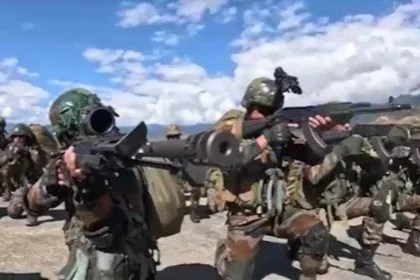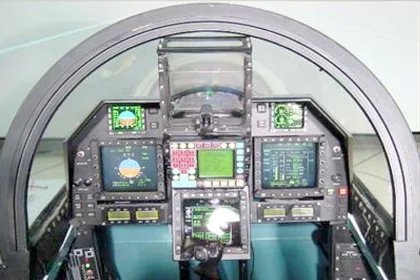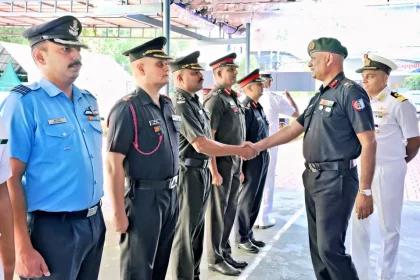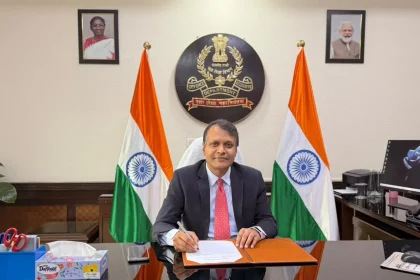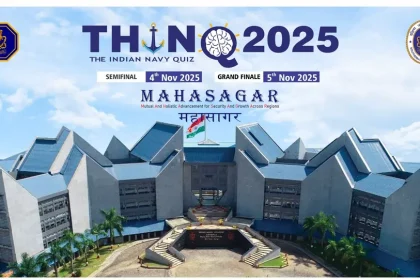Cochin Shipyard and Denmark’s Svitzer Join Hands to Build Advanced Electric TRAnsverse Tugboats in India
CSL–Svitzer Pact to Power India’s Green Maritime Future with Next-Gen Electric Tugboats.
India Launches Major Tri-Service Exercise ‘Poorvi Prachand Prahar’ in Arunachal’s High Mountains
India’s Army, Navy, and Air Force unite for ‘Poorvi Prachand Prahar’—a high-altitude tri-service exercise testing future-ready, multi-domain combat operations in…
CSIO Develops Waveguide-Based Smart HUD for India’s Next-Gen AMCA Stealth Fighter
CSIO’s waveguide-based smart HUD to power India’s AMCA stealth fighter — 30% lighter, 50% more efficient, and fully indigenised.
Major General Ramesh Shanmugham Conducts Administrative Inspection of NCC Ernakulam Group Headquarters
ADG commends high training standards and emphasizes cadet safety and adoption of technology.
Shri Vishvajit Sahay Assumes Charge as Controller General of Defence Accounts
Veteran IDAS officer brings over three decades of experience in defence finance and public administration.
Indian Naval Academy Set to Host THINQ 25 Semi-Finals and Grand Finale at Ezhimala
The Indian Naval Academy (INA), Ezhimala, is all set to host the Semi-Finals and Grand Finale of THINQ 25 –…


